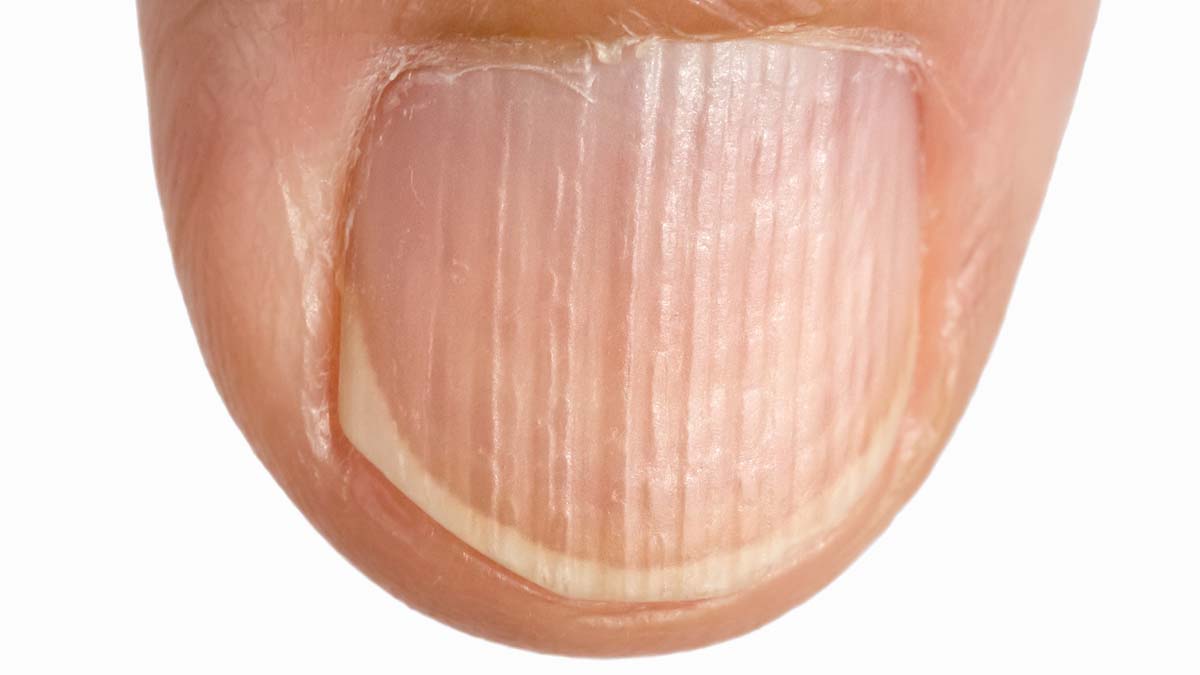Sometime in his late 40s, Louie Lewis of Greenville, South Carolina, noticed something peculiar about his toenails.
The ones on his left foot were pinkish-white, vibrant, and supple — the picture of health. The ones on the right were cracked, dusty, brittle, and harder to cut.
“It was as if my right foot suddenly had somebody else’s toenails,” Lewis said. “Yet both feet are subjected to the same socks, shoes, environment, everything — But I don’t have any idea how to explain the two different sets of toenails.”
While Lewis’s condition might sound unusual or even alien, human toenails and fingernails are more than just cosmetic or protective: They are often an indication of an array of potential medical conditions to consider.
“The nails can be a window into a person’s health,” said Dr. Todd Schlesinger, director of the Dermatology and Laser Center of Charleston and the Clinical Research Center of the Carolinas. “Certain chronic medical conditions, exposures and medications affect the nails, and there are also external factors such as dryness, fungal, yeast and bacterial infection.”
The Centers for Disease Control and Prevention (CDC) estimate that while fungal nail infections affect only about 14% of the total U.S. population, they can happen at anytime to anyone, due to common skin conditions like psoriasis, autoimmune hair loss and eczema.
“Most of the time, these are harmless changes due to lifestyle or to a nail injury,” said Dr. Aracely Bonilla Navarrete, internal medicine physician, in an online article for Scripps Coastal Medical Center Hillcrest of San Diego, Calif. “However, in some cases they may be a sign of health issues, such as nutritional imbalances or thyroid problems.”
For example, if you should suddenly find a bluish color to your nails, it means you are not getting enough oxygen in your bloodstream.
White nails can signify liver disease or diabetes.
Half-pink, half-white nails are a sign of kidney disease.
Yellow nails? Lung disease.
Dusky red half-moon shapes could be lupus, heart disease, hair loss or arthritis.
And if you ever see blue half-moon shapes on your nails, get medical help fast — it’s a sign you’ve been poisoned.
“Discolored/abnormally thickened nails is a top nail concern among our patients,” Schlesinger said. “But primarily, patients complain about toenail problems more than fingernails because they are more prone to fungal infection and chronic damage from ill-fitting shoes, as well as from chronic disease such as venous or arterial disease, dryness and chronic conditions such as pulmonary and/or kidney disease.”
And unless it’s a medical emergency, the American Academy of Dermatology recommends seeing a dermatologist for any of the following:
• Dark streaks — Time for a skin cancer check, especially melanoma, the most serious type of skin cancer. Allowed to grow, treatment becomes more difficult.
• Lifting — If a nail starts lifting up so that it’s no longer completely attached, you might need treatment to clear an infection.
• Pitting — If your nails have dents that look like they were made by an ice pick, you could have a disease affecting your entire body.
• Deep grooves (or gaps) — Means your nails have suddenly stopped growing. Fever, injury, chemotherapy or major stress are usual causes.
• Ram’s horns — This condition happens when the nails thicken and overgrow and is usually cured with professional cutting and nail treatment.
• Curved nails — Often have a spongy feel and make fingertips swell. They can be harmless, but can also signal disease in the lungs, heart, liver, stomach or intestine — which means it’s time to get checked by a board-certified dermatologist.
When asked about the contradiction of Lewis’ condition, in which one foot is a picture of health and the other is something of a question mark, Schlesinger said that although it is strange-sounding, “It can certainly happen.”
“Sometimes there is no rhyme or reason for it,” he said. “But most of the time, nail conditions affect one or more nails on both limbs. So if you have an asymmetrical condition like this, it might be a good idea to see a dermatologist for a diagnosis.”
By L. C. Leach III








